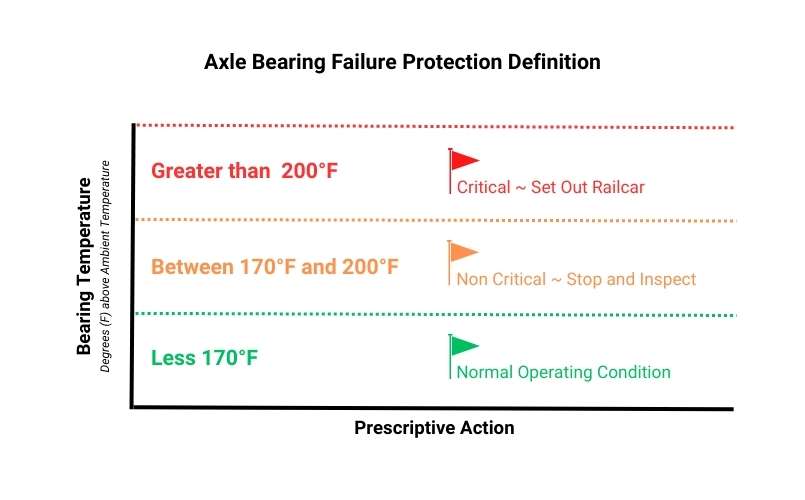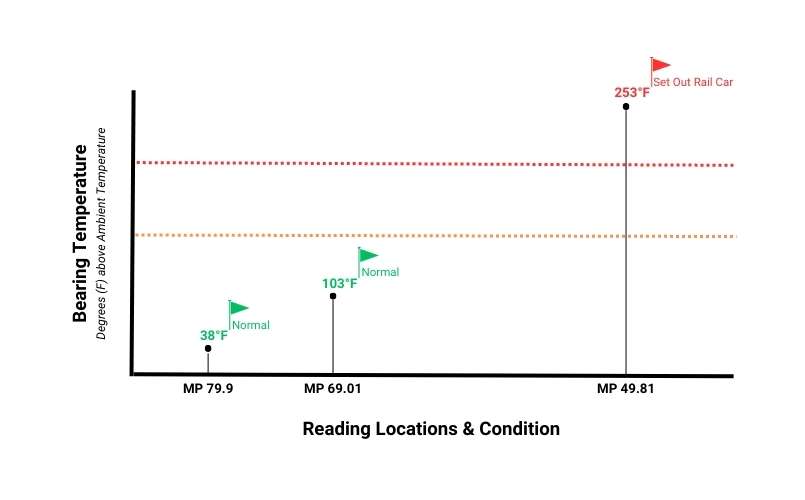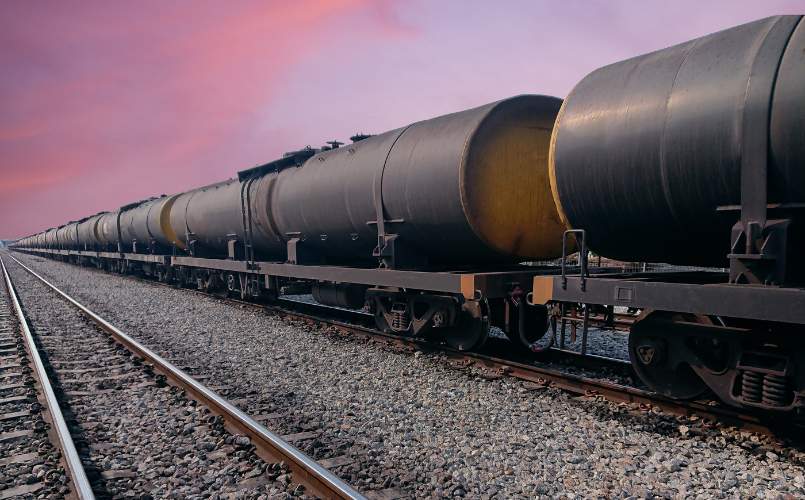Failure findings from Norfolk Southern train derailment in Ohio
In early February, a Norfolk Southern (NS) train derailed near East Palestine, Ohio. The train consisted of 149 rail cars, with 11 containing hazardous materials that ignited after the derailment. Fortunately, there were no reported injuries or fatalities. However, there are concerns about the long-term environmental and health impacts on the 2,000 residents of East Palestine. The National Transportation Safety Board (NTSB) has released a preliminary report, RRD23MR005 – Norfolk Southern Railway Train Derailment with Subsequent Hazardous Material Release and Fires, which provides initial insights into the failure modes and protections being evaluated as part of the investigation. These insights are worth exploring further in this article.
The primary mechanical failure risk being investigated in the accident is the overheating of a wheel bearing. Overheated bearings are not the only problem that can cause a train to derail, but they are essential to a train’s safe and efficient operation. Inside each bearing is a series of rollers that are a critical component in turning the rail car axle. When lubricated, the bearings limit friction while supporting the railcar’s weight. If a bearing gets too hot, usually from a loss of lubricant, it can melt, causing it to seize up or come off the axle. The resulting damage can throw a railcar out of alignment and cause it to jump the tracks.
“Roller bearings fail. But it’s absolutely critical for problems to be identified and addressed early so these aren’t run until failure” NTSB Chair Jennifer Homendy
Norfolk Southern has implemented protections to mitigate bearing failures on its railcars using a Hot Bearing Detector (HBD). The HBD is placed trackside at fixed points and automatically measures the axle temperatures as the train passes by. Its function is to detect overheated bearings and provide real-time warnings to train crews so they can take appropriate action. A more detailed view of the protection scheme, evaluation thresholds, and prescribed actions is provided below.

The protection definition follows very similar constructs to an Asset Twin in the Itus Solution. Key components which are defined include a Failure Risk, which is the elevated bearing temperature due to lack of lubrication. Also defined is the specific Protection, which monitors the bearing temperature over time. The Advisories (prescriptive actions) are also defined, which detail what should be done when certain conditions identify emerging threats.
The report found that the temperature of the bearing in question had been increasing for 30 miles before reaching East Palestine. However, only the third reading reached Norfolk Southern’s threshold to stop and inspect the train via a real-time audible alarm. Unfortunately, the alarm was triggered too late as the train derailment was already in process.

The bearing temperatures were evaluated at three data points before the train derailment. The 23rd car’s axle had a recorded temperature of 38 degrees above ambient temperature at Milepost 79.9 on the Fort Wayne Line. At the next detector at 69.01, it increased to 103 degrees, and at Milepost 49.81 on the east side of East Palestine, the recorded temperature was 253 degrees above ambient.
The accident highlights key constructs to consider when designing failure risk protection models.
Data polling rates should consider condition escalation rates to allow for enough time to detect and respond to mitigate the identified failure risk. In the case of the NS derailment, the distance between the last two temperature measurements on the wheel bearing was 19.2 miles, and the temperature difference over that time was 150 degrees. Somewhere over that time, the bearing temperature passed through a non-critical threshold that would have advised the train engineer to stop and inspect the rail car but significantly pushed past the critical threshold of 200 degrees. To mitigate this potential data gap in the future, the Association of American Railroads announced that all seven Class 1 railroads in the country have committed to adding approximately 1,000 detectors to close the gaps between detectors and achieve an average spacing of 15 miles.
Design thresholds, analytics, and actions from actual experience. When designing a Failure Risk Protection, reliability engineers must make key decisions, including how many thresholds to implement, how much tolerance should be given for each threshold, and what to prescribe for risk mitigation at each level. Design thresholds, analytics, and actions from actual experience, using historical data to simulate a model and define analytics for a specific operating context. Sometimes this information is available through the collective knowledge of industry experts via standards such as ISO10816 (mechanical vibration). In other situations, this information may be available from OEMs in their operation, maintenance, and troubleshooting manuals defined from their specific failure testing. Many times, these models are developed from a ‘really bad experience’ or consequential failure. As a result of this accident, Norfolk Southern is working with manufacturers to develop more sensors, reevaluate triggering thresholds, and analyze data for patterns that could provide earlier warnings. A more robust method to design Protections is from actual operating experience. Solutions like Itus provide an ability to simulate a model from historical data which is an ideal method to define analytics for a specific operating context. The capability allows engineers to understand how often the system will advise at various threshold levels, ensuring there is appropriate time to respond with the most appropriate prescriptive action to mitigate the risk.
Accounting for the worst-case consequence is essential in evaluating risk and advising on mitigations with critical context to drive appropriate action. Unfortunately, we often see analytical models which are not designed from a complete risk context. By injecting risk into a Failure Protection scheme we can assess the situation more accurately (historical probability of failure) but more importantly we can advise on mitigations with critical context to drive appropriate action. According to the Federal Railroad Administration, about 1,000 derailments occur each year but on average only 17 of those accidents involved rail cars with hazardous cargo that could present significant safety or environmental risks. Ideally, risk should be evaluated within the analytical model to provide more advanced warning, increase time to respond, and offer more specific context on what is happening and what to do. As we are learning from the East Palestine accident, there is a very different consequence when a rail car carrying freight has a failing bearing vs. a rail car carrying highly toxic vinyl chloride.
The East Palestine accident impacted 2,000 residents with long-term environmental and health concerns. The rail industry has a keen understanding of the wheel bearing – lack of lubrication failure mode for rail cars and is making progress on the protections that can be put in place to mitigate the risks. The preliminary report has provided great insights for anyone building analytical or failure risk monitoring models that are great reminders for design moving forward.
If you are interested in learning more about Asset Twins and how the Itus solution can rapidly implement failure risk protections to predict and minimize unplanned events, feel free to reach out to us, we would love to chat!



